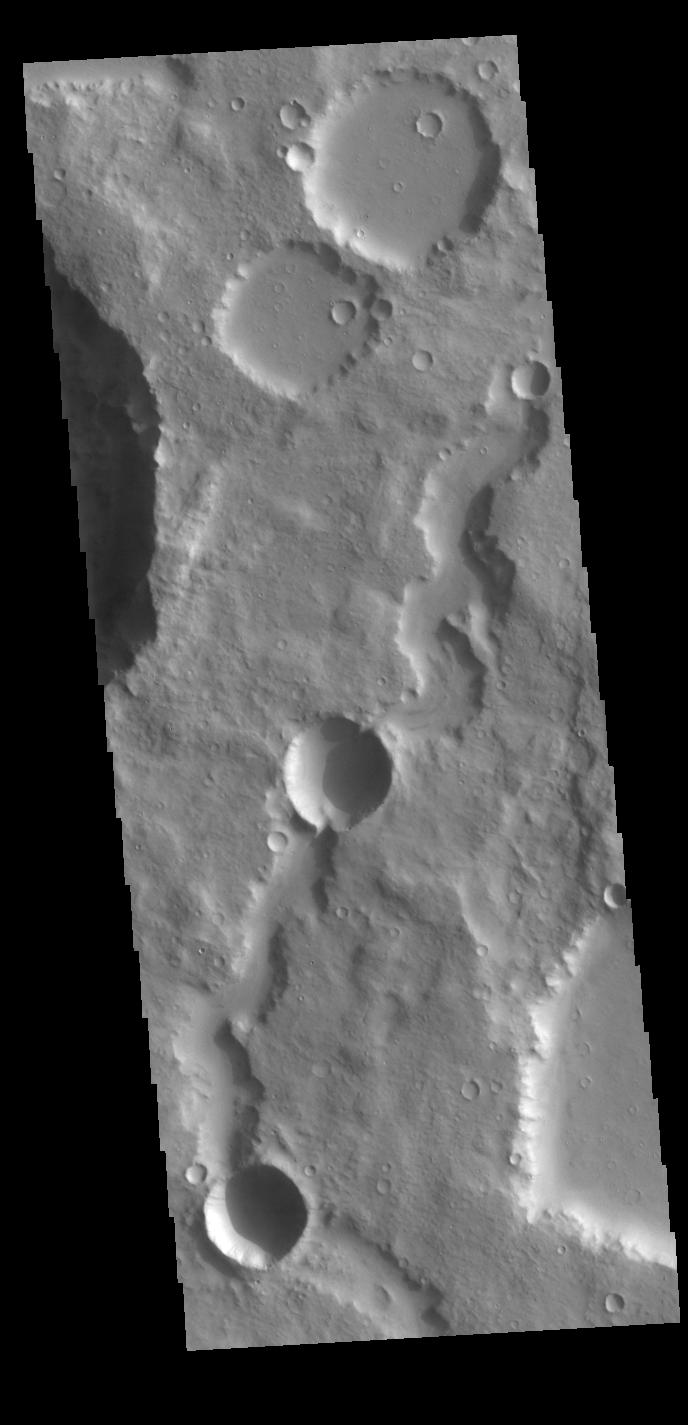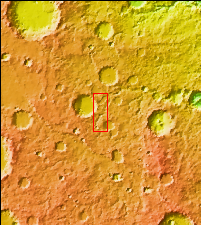
|
Which Formed First?
- Click the image above for a larger view
- Full-Res JPEG (688 x 1425) (74.8 kB)
- Full-Res TIFF (688 x 1425) (687.7 kB)
Caption:

Context image
Today's VIS image shows an unnamed channel in northern Terra Cimmeria. Two impact craters occur along the length of the channel. The crater rims are higher than the channel floor and are not breached. This observation means the craters are "on top" of the channel, and therefore are younger than the channel. Figuring out which feature formed first is called relative dating. We don't know the absolute ages of either the channel or the impact craters, or how much time elapsed between the channel being carved and the impacts that resulted in the craters. All we can say is what feature formed first.
Orbit Number: 78398 Latitude: -2.18803 Longitude: 123.026 Instrument: VIS Captured: 2019-08-17 14:31
Background Info:
Please see the THEMIS Data Citation Note for details on crediting THEMIS images.
NASA's Jet Propulsion Laboratory manages the 2001 Mars Odyssey mission for NASA's Science Mission Directorate, Washington, D.C. The Thermal Emission Imaging System (THEMIS) was developed by Arizona State University, Tempe, in collaboration with Raytheon Santa Barbara Remote Sensing. The THEMIS investigation is led by Dr. Philip Christensen at Arizona State University. Lockheed Martin Astronautics, Denver, is the prime contractor for the Odyssey project, and developed and built the orbiter. Mission operations are conducted jointly from Lockheed Martin and from JPL, a division of the California Institute of Technology in Pasadena.
Cataloging Keywords:
| Name | Value | Additional Values |
|---|---|---|
| Target | Mars | |
| System | ||
| Target Type | Planet | |
| Mission | 2001 Mars Odyssey | |
| Instrument Host | Mars Odyssey | |
| Host Type | Orbiter | |
| Instrument | Thermal Emission Imaging System (THEMIS) | |
| Detector | ||
| Extra Keywords | Crater, Grayscale, Impact, Thermal | |
| Acquisition Date | ||
| Release Date | 2019-09-30 | |
| Date in Caption | 2019-08-17 | |
| Image Credit | NASA/JPL-Caltech/ASU | |
| Source | photojournal.jpl.nasa.gov/catalog/PIA23480 | |
| Identifier | PIA23480 | |
